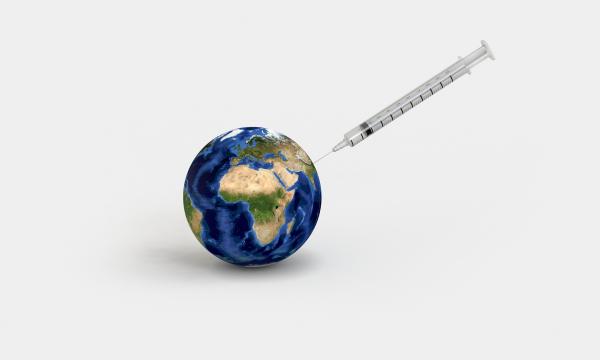In recent months, the media has made a habit of heaping scorn on COVID conspiracy theorists and vaccine-hesitant Americans. This coverage is ostensibly designed to boost vaccine uptake and bring the pandemic to its end. But there's a critical downside to this schoolmarmish approach to science journalism. It doesn't work.
One obvious explanation is that no one likes being lectured by people they don't trust, and the majority of Americans deeply distrust the press. "56% of Americans agree with the statement that 'Journalists and reporters are purposely trying to mislead people by saying things they know are false or gross exaggerations,'" Axios reported in January. "58% think that 'most news organizations are more concerned with supporting an ideology or political position than with informing the public.'"
But there's another well-documented reason why some people are inclined to ignore the media's pleas to get vaccinated, and it comes down to how the messaging is framed. News reports that warn about the dangers of vaccine hesitancy unintentionally communicate that vaccine hesitancy is widespread and thus socially acceptable. To understand how this works, let's talk about teenage drug use.
Vaccine lectures and anti-drug PSAs
Remember those anti-drug PSAs from the 1990s? They've been a favorite topic for standup comedians since their inception, for the same reason my friends and I laughed at them in junior high. They were so detached from the experience of the average teenager that we couldn't help but mock them. As it turns out, we weren't the only kids who thought so. Multiple surveys of thousands of students (ages 12.5 – 18) have found that those commercials, part of a $1 billion anti-drug campaign, actually slightly increased teen marijuana use.
The study authors concluded that the campaign might have failed because it didn't add anything new to the anti-drug messaging already widely circulating in the media. Another possibility was that it contained “an implicit meta-message that drug use is commonplace.” Everybody's doing it, in other words. A pair of public health researchers looked at this evidence and argued in a 2013 Human Vaccines & Immunotherapeutics article that the same phenomenon could similarly hinder pro-immunization messaging. Amplifying vaccine refusal, they explained,
is likely to backfire … The most fundamental principle of persuasion is that people do things for their own reasons, not your reasons … Policy responses to vaccine refusal must reflect the realities of how individuals make decisions ...
The authors went on to suggest an alternative approach that comports with these important considerations. Citing a 1994 study of a university health system, they pointed out that “The most powerful way to convince students to get vaccinated for influenza was telling them that a large proportion of fellow students had also opted for vaccination.” Hotel guests in another study, they added, were more inclined to reuse their towels if they were told that “the majority of guests in this room reuse their towels.”
People are clearly motivated by other people's decisions, but the media's recent vaccine promotion isn't crafted with this in mind. [1] For example, NBC News recently warned that vaccine rejection is widespread in rural America and motivated by a lack of trust in the government. “This is a mounting, ever-growing distrust of the government at large,” reporter Vaughn Hillyard stressed. “You're seeing this reflected nationally, largely in these mostly white, conservative communities.”
Flip the script
In light of the research discussed above, this was the worst possible story angle, doubly so because vaccine uptake has increased recently. But the narrative persists. CNN: “More than half of rural residents have received a Covid-19 vaccine or plan to, but hesitancy remains high, analysis finds.” The network warned in another headline that “Many Evangelicals say they won't be vaccinated against Covid-19,” though buried deep in the story was this striking admission:
According to the Kaiser Family Foundation, the number of Americans who have been vaccinated and who intend to be vaccinated continues to rise, while the number of people who say they want to 'wait and see' is falling.
If the goal is to promote vaccine acceptance, CNN would do well to put the gist of that last paragraph in the headline next time.
[1] This is particularly frustrating because the media has done much in years past to stoke vaccine rejection. According to Harvard University's David Ropeik: “What the news media really do is not create fear but magnify it by emphasizing the emotional characteristics that make the risk more alarming; in the case of vaccines, the danger to children, the apparently greater risks than benefits, mistrust of pharmaceutical companies and government.”




